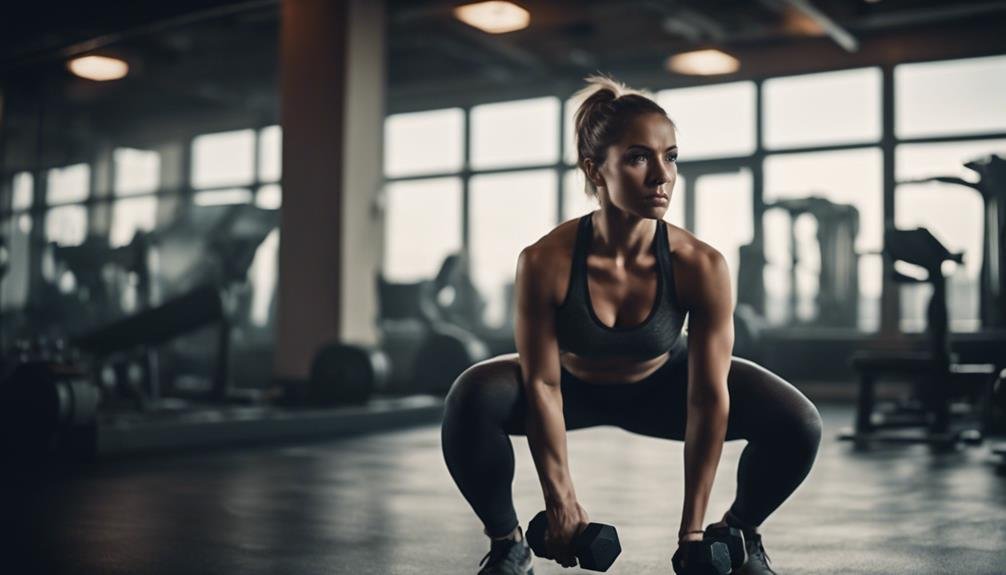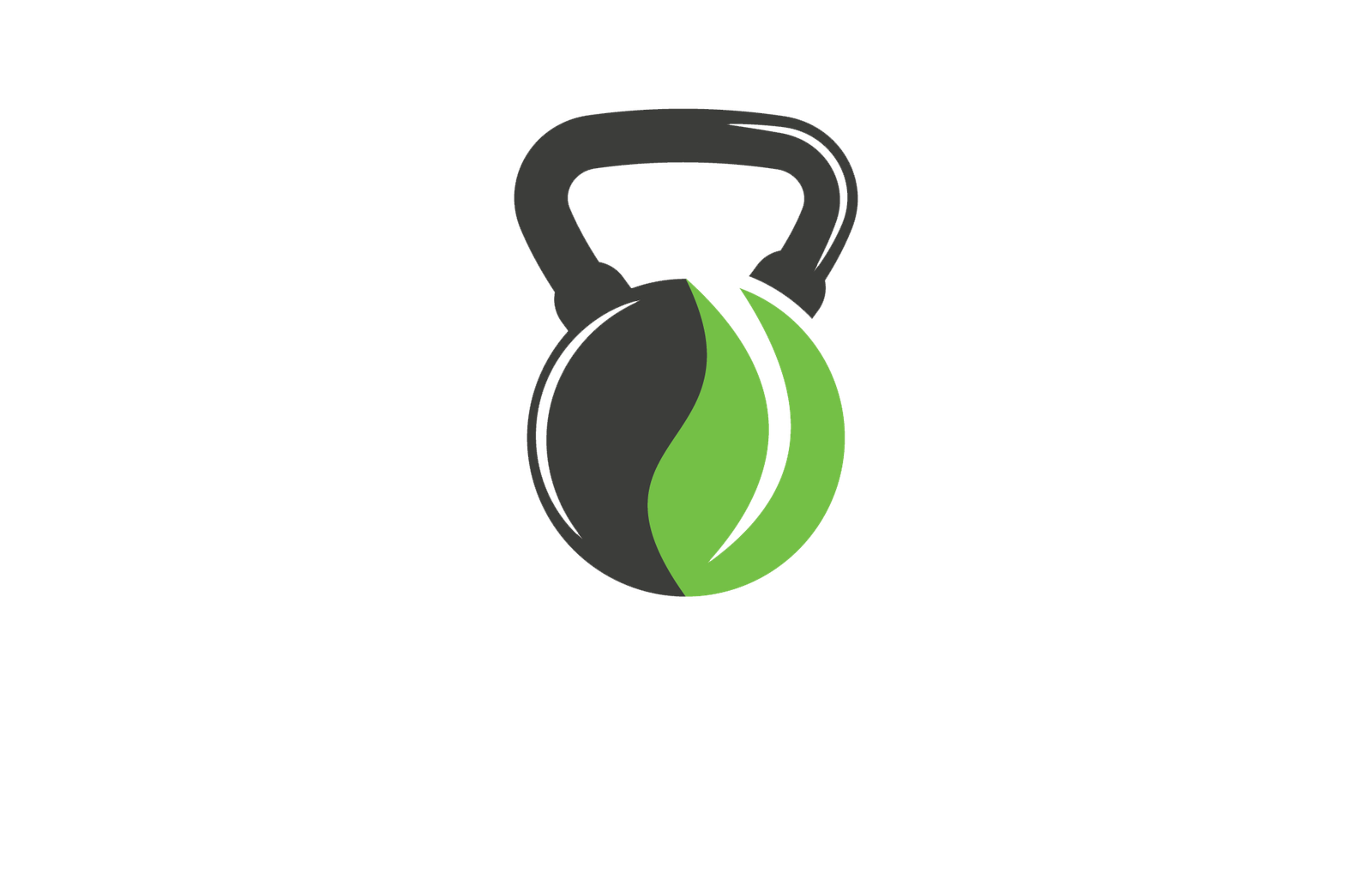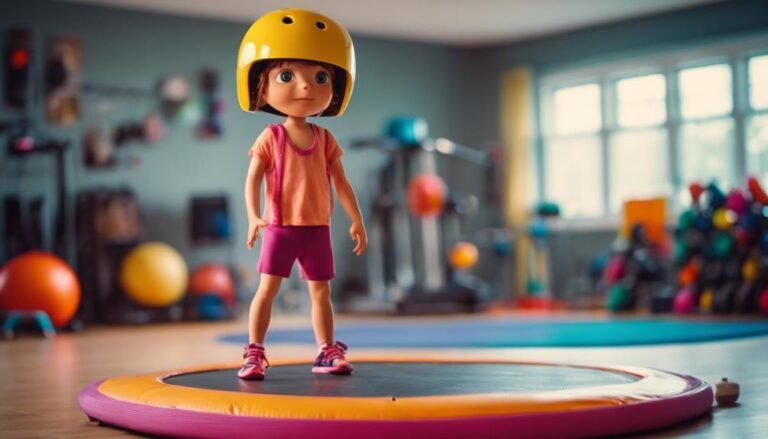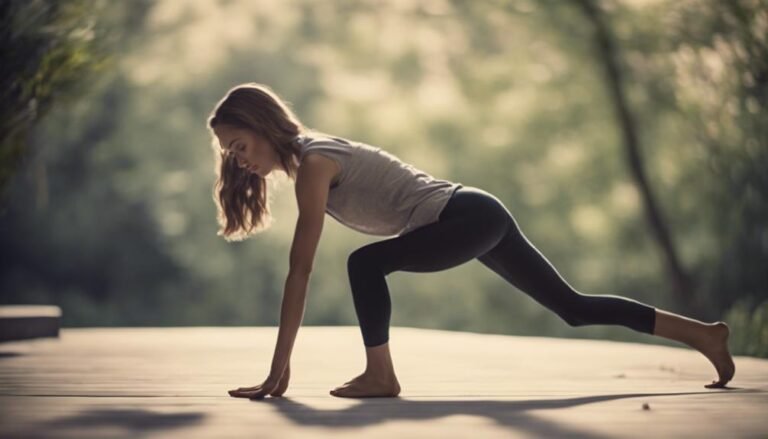Don't miss our holiday offer - 20% OFF!

Lower Body HIIT Workouts for Toning and Strength
Sculpt and strengthen your lower body with high-intensity interval training workouts that ignite calorie burn and leave you wanting more.
We're about to transform our lower bodies with HIIT workouts, a powerful way to tone our legs, glutes, and calves while boosting strength and metabolism. By incorporating exercises like sumo squats, lunges, and calf raises into our HIIT routines, we'll improve muscular endurance, circulation, and overall fitness. We'll also enhance our athletic performance and make daily activities feel less challenging. As we dive deeper into the world of lower body HIIT, we'll discover more effective exercises, essential muscle groups, and clever techniques to maximize our workout results – and that's just the beginning.
Key Takeaways
- Incorporate HIIT exercises that target quadriceps, hamstrings, glutes, calves, and core muscles for overall lower body strength and stability.
- Dynamic stretching, foam rolling, and muscle activation exercises prepare the muscles for intense HIIT workouts and reduce the risk of injury.
- Squat and lunge variations, such as sumo squats and walking lunges, challenge the legs and glutes from multiple angles for a well-rounded fitness routine.
- Calf raises and ankle mobility exercises strengthen the calf muscles and ankles, vital for maintaining proper foot mechanics and preventing injuries.
- Combine HIIT with music and technology, such as fitness apps and customizable playlists, to boost energy and drive for a toned and strong lower body.
Benefits of HIIT for Lower Body
We've all experienced the rush of endorphins and energy boost that comes with incorporating High-Intensity Interval Training (HIIT) into our lower body workouts, and for good reason – HIIT has been proven to remarkably improve muscular endurance, boost metabolism, and even enhance overall athletic performance. When we incorporate HIIT into our lower body workouts, we can expect significant improvements in our overall fitness. One of the key benefits of HIIT is improved circulation, which allows oxygen and nutrients to reach our muscles more efficiently, leading to faster recovery and reduced muscle soreness. Additionally, HIIT enhances endurance, allowing us to push ourselves harder and longer during our workouts. This increased endurance also translates to daily life, making everyday activities like climbing stairs or carrying groceries feel less challenging. By incorporating HIIT into our lower body workouts, we can experience these benefits firsthand, taking our fitness journey to the next level.
Essential Lower Body Muscle Groups
As we shift our focus to the specific muscle groups that HIIT can benefit, it's clear that targeting the right areas is key to maximizing our lower body workouts. We're talking about the powerhouse muscles that drive our movements, stabilize our joints, and support our overall athletic performance. The quadriceps, hamstrings, glutes, calves, and core muscles are the essential lower body muscle groups that HIIT can effectively tone and strengthen.
These muscle groups work together to maintain proper foot mechanics, ensuring we move efficiently and reduce our risk of injury. When we neglect to engage these muscles, muscle imbalance can occur, leading to poor posture, poor performance, and increased risk of injury. By incorporating HIIT exercises that target these muscle groups, we can improve our overall lower body strength, stability, and agility. We'll be better equipped to tackle daily activities, sports, and fitness challenges with confidence and precision. By understanding the importance of these essential muscle groups, we can create a more effective and efficient HIIT workout routine that yields impressive results.
Warm-up Exercises for HIIT
Before diving into a high-intensity interval training (HIIT) workout, a dynamic warm-up is essential to prepare our muscles for the impending intensity. We want to get our hearts rate up, mobilize our joints, and activate our muscles to facilitate a safe and effective workout. Our warm-up routine typically starts with dynamic stretching to loosen up our legs, hips, and glutes. We'll do leg swings, lunges, and leg circles to get our blood flowing and muscles warm. Next, we'll incorporate foam rolling to release any tension in our IT band, calves, and quads. This helps reduce the risk of injury and improves our overall range of motion. After that, we'll move on to muscle activation exercises to fire up our core, glutes, and legs. This includes exercises like glute bridges, leg raises, and calf raises. Finally, we'll finish with some light cardio prep, such as jogging in place or jumping jacks, to get our hearts rate up and prepare our bodies for the HIIT workout ahead. By including these exercises in our warm-up, we'll be able to perform at our best while minimizing the risk of injury.
Squat and Lunge Variations
As we explore squat and lunge variations, we're excited to uncover the benefits of sumo squats, which offer a wider stance and increased glute engagement. We'll also progress through lunge variations, from stationary to walking and lateral, to challenge our legs and glutes in different ways. By incorporating these variations into our HIIT workouts, we'll be able to target our lower body from multiple angles and achieve a more well-rounded fitness routine.
Sumo Squat Benefits
We've all struggled with traditional squats, but sumo squats, with their wider stance, offer a game-changing alternative that targets our glutes and legs from a unique angle, providing a thorough lower body workout. By taking a wider stance, we're able to engage our glutes and legs in a way that traditional squats can't. This is especially beneficial for those of us who struggle with muscle imbalance, as sumo squats help to even out our strength and stability.
To reap the benefits of sumo squats, it's essential to maintain proper form. This means engaging our core and keeping our back straight, while lowering ourselves down into a squat. By doing so, we're able to prevent injury and safeguard a safe, effective workout. With sumo squats, we can target our glutes, quads, and hamstrings, all while improving our overall lower body strength and tone. By incorporating sumo squats into our HIIT workouts, we can take our fitness to the next level and achieve the toned, strong legs we've always wanted.
Lunge Variation Progressions
By incorporating lunge variations into our HIIT workouts, we can further challenge our legs and glutes, taking our lower body strength and tone to new heights. Lunge formations, such as walking lunges, curtsey lunges, and lateral lunges, target different muscle groups, keeping our workouts fresh and preventing plateaus. We can also experiment with different stances, like narrow or wide stances, to alter the emphasis on our quadriceps and hamstrings.
To continue making progress, we need to incorporate progressive overload into our lunge workouts. This can be achieved by increasing the weight, reps, or sets over time. For example, we can add weights or resistance bands to our lunges, or try single-leg lunges for an added challenge. By gradually increasing the intensity, we can continue to build strength and tone in our lower body.
Calf Raises and Ankle Mobility
Performing calf raises regularly can substantially improve ankle mobility, reducing the risk of injuries and enhancing overall lower body performance. As we incorporate calf raises into our HIIT workouts, we're not only toning our calf muscles but also strengthening our ankles. This is essential because ankle strength is vital for maintaining proper foot mechanics. When our ankles are weak, our foot pronation and supination can suffer, leading to poor performance and increased risk of injury.
Glute-Focused HIIT Exercises
As we shift our focus to the powerhouse of our lower body, we're about to ignite our glutes with high-intensity interval training exercises that will leave us feeling stronger, faster, and more agile.
When it comes to glute-focused HIIT exercises, we need to prioritize proper form and activation to avoid muscle imbalances. We must engage our core and maintain pelvic tilts to confirm our glutes are firing correctly. Here are some exercises to incorporate into our routine:
| Exercise | Muscle Focus | Intensity Level |
|---|---|---|
| Glute Bridges | Gluteus Maximus | High |
| Lateral Lunges | Gluteus Medius | Medium |
| Donkey Kicks | Gluteus Biceps Femoris | Low |
Leg Press and Deadlift Alternatives
As we explore alternatives to leg press and deadlifts, we're looking for options that are easier on our joints while still delivering a killer workout. We'll cover lower-impact exercises that can replace these heavy-hitters, as well as modified movement patterns that can help us achieve similar results without the high-impact stress. By exploring these alternatives, we can create a more well-rounded and sustainable lower body HIIT workout routine.
Lower Impact Options
We often need lower-impact alternatives to high-impact exercises like deadlifts and leg presses, which can be tough on our joints, especially when we're just starting out or dealing with injuries. That's why we turn to lower-impact options that still deliver results without putting excessive stress on our joints.
Low-impact machines are a great alternative, providing gentle landings and reduced stress on our joints. Here are some options we can incorporate into our workouts:
- Seated leg curl and leg extension machines: These machines target our hamstrings and quadriceps without putting excessive stress on our joints.
- Calf raise machines: Gentle on the ankles and calves, these machines are perfect for targeting our lower legs.
- Hip abduction and adduction machines: These machines work our glutes and inner thighs without putting excessive stress on our joints.
- Leg press machines with a shorter range of motion: These machines reduce the impact on our joints while still targeting our legs.
- Step-up machines: These machines provide a low-impact way to target our legs and glutes.
Alternative Exercises List
When we need alternatives to leg press and deadlifts, exercises that target similar muscle groups without the high-impact stress can be a game-changer. That's why we're excited to share our go-to alternatives that'll get the job done without putting excessive strain on our joints.
For a leg press alternative, we love knee extensions. This exercise specifically targets the quadriceps, and when done correctly, can be just as effective as a leg press. Simply sit down on a leg extension machine, adjust the weight to a comfortable level, and lift the weight up with your legs. Lower it back down slowly, squeezing your quads at the top of the movement.
If deadlifts are off the table, we opt for ankle weights instead. These bad boys add resistance to our legs without putting excessive stress on our lower backs. Try doing walking lunges or calf raises with ankle weights to target your legs and glutes without the high-impact stress of a deadlift. The added resistance will still challenge your muscles, but with a lower risk of injury.
Modified Movement Patterns
By modifying our movement patterns, we can create alternative exercises that mimic the muscle engagement of leg presses and deadlifts without the high-impact stress. This is especially important for individuals who are recovering from injuries or looking to reduce the wear and tear on their joints. By adapting our training, we can guarantee continued progress without compromising our bodies.
Modified movement patterns to incorporate into our adaptive training include:
- Step-ups: Replace leg presses with step-ups, targeting the quadriceps and hamstrings without the heavy load.
- Trap bar deadlifts: Modify traditional deadlifts with trap bar deadlifts, reducing the range of motion and stress on the lower back.
- Glute bridges: Isolate the glutes with glute bridges, a low-impact exercise that strengthens the gluteus maximus.
- Bulgarian split squats: Perform Bulgarian split squats, a unilateral exercise that targets the quadriceps, hamstrings, and glutes without excessive impact.
- Calf raises: Incorporate calf raises into our routine, a low-impact exercise that targets the gastrocnemius and soleus muscles.
High-Intensity Interval Examples
How can we maximize our lower body strength and endurance in the shortest amount of time possible, while also boosting our metabolism and burning calories in overdrive? The answer lies in high-intensity interval training (HIIT). By incorporating HIIT into our workout routine, we can achieve impressive results in minimal time. For example, we can try a 20-minute HIIT workout consisting of 30 seconds of burpees, followed by 30 seconds of rest. We can repeat this pattern for 20 minutes, burning a whopping 200-300 calories in the process. To take our workout to the next level, we can use fitness apps like Nike Training Club or JEFIT that offer pre-designed HIIT workouts and customizable playlists to keep us motivated. Alternatively, we can create our own workout playlists on music streaming services like Spotify to boost our energy and drive. By combining HIIT with the right music and technology, we can tap into our full potential and achieve the toned, strong lower body we've always wanted.
Effective Calorie Burning Techniques
As we venture into the world of effective calorie burning techniques, we discover that the key to torching those unwanted pounds lies in strategic combinations of exercises that ignite our metabolism and keep it firing on all cylinders. When it comes to fat burning, we need to focus on exercises that not only burn calories during the workout but also provide a metabolic boost that keeps our metabolism revving long after we've finished exercising.
To achieve this, we can incorporate the following techniques into our lower body HIIT workouts:
- Interval Training: Alternate between high-intensity exercises and brief periods of rest to keep our metabolism firing on all cylinders.
- Compound Exercises: Incorporate exercises that work multiple muscle groups at once, such as squats and lunges, to maximize calorie burn and metabolic boost.
- Plyometric Exercises: Incorporate explosive movements like jump squats and box jumps to ignite our metabolism and burn fat.
- Resistance Training: Incorporate resistance exercises like leg press and leg extensions to build muscle and boost metabolism.
- Active Recovery: Incorporate low-intensity exercises like cycling or rowing to keep our metabolism going while allowing our muscles to recover.
Building Strength With Resistance
We're now ready to take our lower body HIIT workouts to the next level by building strength with resistance exercises that target our legs, glutes, and calves. This is where we can really start to see significant improvements in our overall strength and muscle tone. To do this, we'll be incorporating resistance bands into our workouts. These versatile and portable tools allow us to work multiple muscle groups at once, making them perfect for HIIT exercises.
| Exercise | Muscle Group | Resistance Level |
|---|---|---|
| Banded Squats | Legs, Glutes | Medium-High |
| Banded Lunges | Legs, Glutes | High |
| Calf Raises | Calves | Low-Medium |
| Banded Leg Press | Legs | Medium-High |
| Glute Bridges | Glutes | Medium |
Plyometric Exercises for Power
Now that we've built a solid foundation of strength with resistance exercises, it's time to explosively boost our power with plyometric exercises that'll have us jumping, bounding, and propelling our way to greater athleticism. Plyometric exercises, also known as jump training, are a type of explosive training that enhances our power endurance. By incorporating plyometrics into our workout routine, we can improve our ability to generate force quickly and efficiently.
Here are some plyometric exercises to add to our workout routine:
- Box Jumps: Jumping onto a box or bench to improve explosive power
- Depth Jumps: Jumping from a height to improve landing mechanics and explosive power
- Burpees: A full-body exercise that combines strength and plyometrics
- Lateral Bounds: Jumping side to side to improve power and speed
- Tuck Jumps: Jumping and tucking our knees up to improve explosive power and speed
Lower Body Stretching Routines
How flexible are we, really, when it comes to our lower body, and are we doing enough to maintain or improve our range of motion? It's easy to overlook stretching when we're focused on intense HIIT workouts, but incorporating lower body stretching routines into our routine can have a significant impact on our overall fitness.
We're not just talking about flexibility gains, although that's a major benefit. A consistent stretching routine can also aid in post-workout relaxation, reducing muscle soreness and improving overall recovery. So, what does an effective lower body stretching routine look like? It's about targeting key areas like our calves, hamstrings, quads, and glutes. We can start with simple exercises like calf raises, hamstring stretches, and lunges, holding each stretch for 20-30 seconds and repeating for 2-3 sets. As we progress, we can incorporate more advanced stretches like sumo squats and side lunges.
Common Mistakes to Avoid
When it comes to lower body HIIT workouts, our enthusiasm can sometimes get the best of us, leading to common mistakes that can hinder our progress and even lead to injuries. We've all been there – anxious to see results, we push ourselves too hard, too fast, and end up paying the price.
To avoid these common pitfalls, let's take a closer look at what we should steer clear of:
- Overtraining Risks: Doing too many intense workouts in a row can lead to fatigue, decreased performance, and increased risk of injury. Make sure to schedule rest days and active recovery sessions.
- Poor Forming: Sacrificing proper form for heavier weights or more reps can lead to injuries and ineffective workouts. Focus on mastering each exercise before increasing intensity.
- Insufficient Warm-Ups: Rushing into a workout without a proper warm-up can increase the risk of injury and decrease performance. Take the time to get your blood flowing and muscles ready.
- Inconsistent Progress Tracking: Failing to track our progress can make it difficult to identify what's working and what's not. Keep a workout log to monitor your progress and make adjustments as needed.
- Ignoring Pain: Pushing through pain can lead to injuries that keep us sidelined for weeks. If you're feeling pain, stop and reassess your form or take a break.
Creating a Consistent Workout Schedule
As we work on creating a consistent workout schedule, we need to focus on setting realistic goals that we can actually achieve. This means identifying our availability and limitations, and crafting a routine that we can stick to in the long term. By doing so, we'll be more likely to make exercise a habit, and see the results we want from our lower body HIIT workouts.
Setting Realistic Goals
We'll start by identifying our current fitness level and setting realistic goals that align with our lifestyle, because creating a consistent workout schedule that we can stick to is crucial for making progress and avoiding burnout. By doing so, we'll be more likely to stay motivated and committed to our workout routine.
To set realistic goals, we'll use effective goal setting strategies that work for us. Here are some strategies to explore:
- Make our goals specific: Instead of 'I want to get fit,' we'll set a specific goal like 'I want to do 10 squats in a row by the end of the month.'
- Break down big goals into smaller ones: If we want to run a marathon, we'll start by setting smaller goals like running a 5K, then a 10K, and so on.
- Find an accountability partner: Having someone to report to and stay accountable with can be a great motivator.
- Track our progress: Keeping a workout log or using a fitness app can help us see how far we've come and stay motivated.
- Remain flexible: Life can be unpredictable, and being adaptable with our goals and adjusting them as needed is vital for success.
Sticking to Routine
By establishing a consistent workout schedule, we can harness the power of habit to drive our lower body HIIT workouts forward, making it easier to stick to our routine even on days when motivation is low. When we commit to a regular exercise routine, our bodies adapt, and we start to crave the energy and endorphin rush that comes with it. To make the most of our morning motivation, we should aim to schedule our workouts at the same time every day. This way, it becomes second nature, and we're more likely to show up and crush our lower body HIIT sessions. Having workout buddies can also be a great motivator. We can hold each other accountable, share tips, and celebrate each other's progress. By finding a workout buddy who shares our fitness goals, we can create a sense of camaraderie and friendly competition that pushes us to be our best selves. With a consistent schedule and a supportive workout community, we'll be unstoppable in our pursuit of toned and strong legs.
Frequently Asked Questions
Can I Do HIIT Workouts With a Knee Injury or Chronic Pain?
We carefully consider our knee health before starting HIIT workouts, especially with a pre-existing injury or chronic pain. We prioritize knee rehabilitation and pain management, modifying exercises to guarantee a safe and effective workout.
How Often Should I Change My HIIT Workout Routine for Progress?
"We fuel our fitness fire by flipping the script every 4-6 weeks, introducing new moves to avoid plateaus, inducing muscle confusion, and driving progressive overload to spark continued progress and growth."
Are HIIT Workouts Suitable for Beginners or Seniors?
We believe HIIT workouts are suitable for beginners and seniors, as they can be modified to suit individual fitness goals and age limitations, allowing everyone to reap the benefits of high-intensity interval training.
Can I Do HIIT Workouts Without Any Special Equipment?
"We can definitely do HIIT workouts without special equipment; we opt for bodyweight exercises, like squats, lunges, and burpees, that are perfect for home workouts, allowing us to get fit and strong in the comfort of our own space."
How Long Does It Take to See Results From HIIT Workouts?
We've learned that consistency is key; with regular HIIT workouts, we can start seeing results within 4-6 weeks, but it's essential to push past our patience threshold and stay committed to reap the benefits.
Conclusion
As we wrap up our lower body HIIT journey, remember that consistency is key. Our bodies are like engines, and regular exercise is the fuel that keeps them running smoothly. By incorporating these HIIT workouts into our routine, we'll be firing on all cylinders in no time. Stay committed, and we'll be tackling those squats and lunges like a pro athlete in no time.



